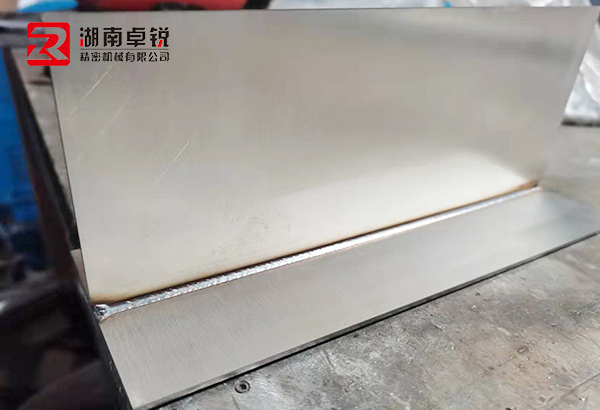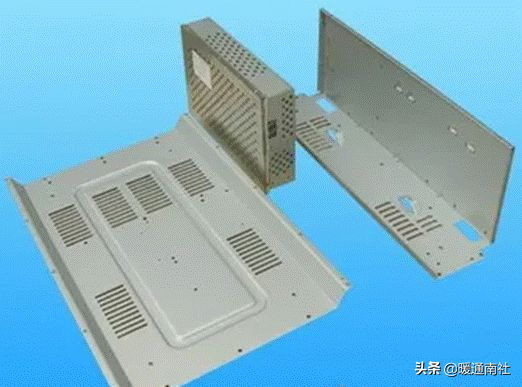The advantages and development trends of CNC Machining indicate that its importance in the manufacturing industry will continue to increase. With the continuous advancement of technology and the expansion of application scenarios, CNC machining will be widely applied and developed in more fields. 1、 There are many advantages of CNC machining, among which the most significant are its high quality, high efficiency, and high precision. The specific advantages are as follows:  improves machining accuracy and ensures machining quality: CNC machining uses digital information to define the machining process of parts, which can accurately control the size, shape, and positional accuracy of the workpiece, avoiding human errors and machine tool errors in traditional machining methods. Improving production efficiency: CNC machining can achieve automated processing, greatly improving production efficiency, shortening production cycles, and reducing production costs. Strong flexibility: CNC machining can easily adjust machining parameters and process flow to meet the machining needs of different specifications and shapes of parts. Improving working conditions: CNC machining can achieve functions such as automatic tool changing and automatic clamping, reducing the labor intensity of workers and improving work efficiency. Beneficial for achieving modernization of production management: CNC machining can be combined with modern production management technologies such as computer-aided design (CAD) and computer-aided manufacturing (CAM) to achieve digital, networked, and intelligent production management. 2、 In terms of development trends, CNC machining will move towards the following directions: high-speed: With the rapid development of industries such as automobiles, national defense, aviation, and aerospace, as well as the application of new materials such as aluminum alloys, the demand for high-speed CNC machine tool machining is becoming increasingly high. In the future, CNC machine tools will have higher spindle speeds, faster feed rates, and shorter cutting times. High precision: With the increasing demand for part accuracy in the manufacturing industry, the precision of CNC machine tools will also continue to improve. In the future, CNC machine tools will have higher positioning accuracy, repeat positioning accuracy, and contour accuracy. Composite processing: Composite processing can complete all complex parts on one machine tool, avoiding workpiece handling and multiple clamping between processes, shortening the processing chain, and improving processing quality. In the future, CNC machine tools will have more composite machining functions, such as turning milling composite, milling grinding composite, etc. Intelligence: Intelligence is one of the important trends in the development of CNC machine tools. In the future, CNC machine tools will have more intelligent functions, such as adaptive control, automatic programming, intelligent monitoring, etc. Greening: With the increasing awareness of environmental protection, green manufacturing has become one of the important development directions of the manufacturing industry. In the future, CNC machine tools will pay more attention to the application of green manufacturing technology, such as the recycling of cutting fluids and waste disposal. Networking: Networking is one of the important trends in the development of CNC machine tools. In the future, CNC machine tools will be combined with technologies such as the Internet of Things and cloud computing to achieve remote monitoring, fault diagnosis, and other functions, improving equipment utilization and management efficiency.
improves machining accuracy and ensures machining quality: CNC machining uses digital information to define the machining process of parts, which can accurately control the size, shape, and positional accuracy of the workpiece, avoiding human errors and machine tool errors in traditional machining methods. Improving production efficiency: CNC machining can achieve automated processing, greatly improving production efficiency, shortening production cycles, and reducing production costs. Strong flexibility: CNC machining can easily adjust machining parameters and process flow to meet the machining needs of different specifications and shapes of parts. Improving working conditions: CNC machining can achieve functions such as automatic tool changing and automatic clamping, reducing the labor intensity of workers and improving work efficiency. Beneficial for achieving modernization of production management: CNC machining can be combined with modern production management technologies such as computer-aided design (CAD) and computer-aided manufacturing (CAM) to achieve digital, networked, and intelligent production management. 2、 In terms of development trends, CNC machining will move towards the following directions: high-speed: With the rapid development of industries such as automobiles, national defense, aviation, and aerospace, as well as the application of new materials such as aluminum alloys, the demand for high-speed CNC machine tool machining is becoming increasingly high. In the future, CNC machine tools will have higher spindle speeds, faster feed rates, and shorter cutting times. High precision: With the increasing demand for part accuracy in the manufacturing industry, the precision of CNC machine tools will also continue to improve. In the future, CNC machine tools will have higher positioning accuracy, repeat positioning accuracy, and contour accuracy. Composite processing: Composite processing can complete all complex parts on one machine tool, avoiding workpiece handling and multiple clamping between processes, shortening the processing chain, and improving processing quality. In the future, CNC machine tools will have more composite machining functions, such as turning milling composite, milling grinding composite, etc. Intelligence: Intelligence is one of the important trends in the development of CNC machine tools. In the future, CNC machine tools will have more intelligent functions, such as adaptive control, automatic programming, intelligent monitoring, etc. Greening: With the increasing awareness of environmental protection, green manufacturing has become one of the important development directions of the manufacturing industry. In the future, CNC machine tools will pay more attention to the application of green manufacturing technology, such as the recycling of cutting fluids and waste disposal. Networking: Networking is one of the important trends in the development of CNC machine tools. In the future, CNC machine tools will be combined with technologies such as the Internet of Things and cloud computing to achieve remote monitoring, fault diagnosis, and other functions, improving equipment utilization and management efficiency.
Hello! Welcome to EMAR company website!
 English
English » »
» »
 Spanish
Spanish Arabic
Arabic Spanish Basque
Spanish Basque Portuguese
Portuguese Belarusian
Belarusian Japanese
Japanese Russian
Russian Icelandic
Icelandic Bulgarian
Bulgarian Azerbaijani
Azerbaijani Estonian
Estonian Irish
Irish Polish
Polish Persian
Persian Boolean
Boolean Danish
Danish German
German French
French Filipino
Filipino Finnish
Finnish Korean
Korean Dutch
Dutch Galician
Galician Catalan
Catalan Czech
Czech Croatian
Croatian Latin
Latin Latvian
Latvian Romanian
Romanian Maltese
Maltese Malay
Malay Macedonian
Macedonian Norwegian
Norwegian Swedish
Swedish Serbian
Serbian Slovak
Slovak Slovenian
Slovenian Swahili
Swahili Thai
Thai Turkish
Turkish Welsh
Welsh Urdu
Urdu Ukrainian
Ukrainian Greek
Greek Hungarian
Hungarian Italian
Italian Yiddish
Yiddish Indonesian
Indonesian Vietnamese
Vietnamese 简体中文
简体中文 Haitian Creole
Haitian Creole










